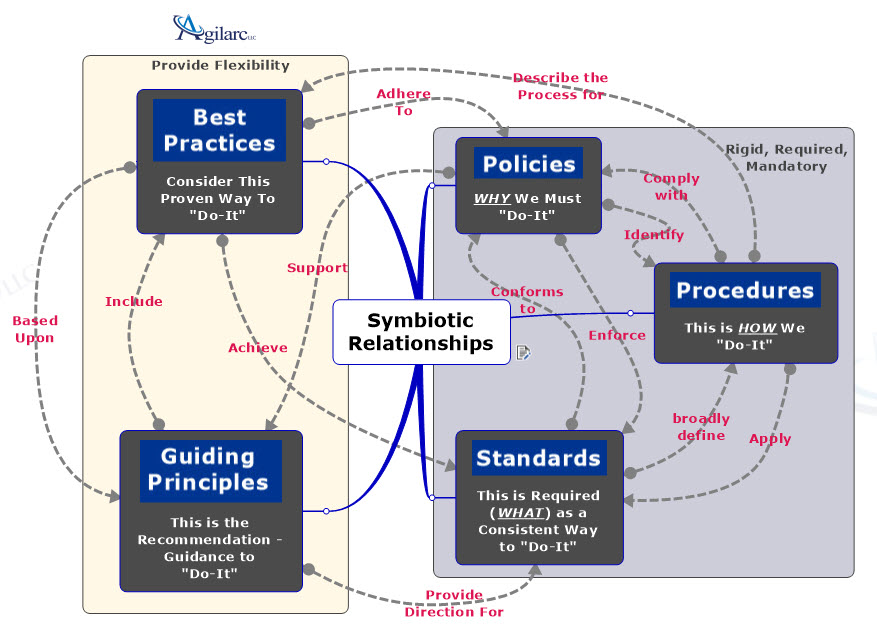
While working on various data management projects with our clients, they inevitably and somewhat carelessly use terms such as policies, procedures, standards, guiding principles and best practices. They assume that everyone is on the same page as to the meaning of these terms and how they are applied with data governance. But sometimes I wonder, especially when you consider how these terms overlap and relate to one another. Agilarc uses a best practice approach to our data management engagements. But what exactly does that mean?
To get a better understanding, it helps to define, provide examples, and identify characteristics of these terms (see Table).

Policies, Procedures & Standards
Consider the examples identified in the previous table. As part of Data Governance, an organization may have established a Data Usage Policy. Based on this policy, a Data Classification Procedure may be identified that provides instructions on how classifying data assets applies to the Data Usage Policy. Conversely, a Data Classification Procedure is used to comply with the Data Usage Policy. The Data Usage Policy enforces Data Classification Standards. The Data Classification Procedure applies a set of Data Classification Standards. Inversely, the Data Classification Standards broadly define the Data Classification Procedure. As we continue defining these relationships, we can quickly see that they are not hierarchical but symbiotic in nature (see Figure).
Organizations that are trying to accomplish a specific data management objective (“Do-IT”), in most cases, have already defined Data Policies (WHY), Procedures (HOW) and Standards (WHAT) as part of a Data Governance program. If not, this should become a priority as your Data Management program matures. The rigid, required and mandatory nature of policies, procedures and standards prevent your organization from becoming a “Wild-West” when it comes to Data Management.
Guiding Principles and Best Practices
Let us consider Guiding Principles and Best Practices. They too, have a symbiotic relationship to Policies, Procedures and Standards. The Guiding Principle, Manage Data as a Corporate Asset, includes, All Data Sources have been identified and have a System Owner, as a Best Practices. This Best Practices adheres to Policies. Guiding Principles provide direction for Standards. Policies support Guiding Principles, etc.
Guiding Principles and Best Practices differ from Policies, Procedures and Standards in that they are not rigid, but provide flexibility in their definition and implementation. This flexibility allows Agilarc to assist clients with data management objectives by identifying and applying their libraries of Guiding Principles and Best Practices to better manage data to meet business objectives.
Conclusion
If you are involved in some aspect of data management in your organization, identify and review policies, procedures and standards as they relate to Data. Are they consistent and support each other? Does your Data Governance program have documented data management guiding principles? Is there evidence that data management objectives are supported by Best Practices? If not, let Agilarc help your organization assess your data management capabilities using a Best Practice approach to Data Management.